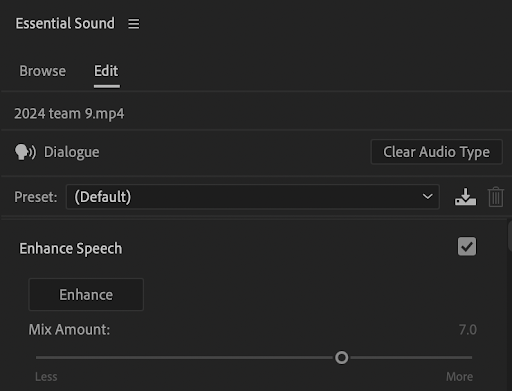The walking Dead of Media…
Radio isn’t dead… it’s more like a zombie. TV isn’t dead but it’s still making money and serving a purpose. Film and Movies aren’t going anywhere but they are changing. Just like the industries we serve, your classroom is changing and so should you.
Film and movies are growing but not for long form. Episodic production is going to continue to boom for several more years as on demand viewing continues to grow. Netflix co-CEO Ted Sarandos expects the streaming giant to spend around $17 billion in 2024. That’s on par with what the expenditure for 2023 is expected to be. Add the $3 billion that Hulu expects to spend with the additional $17.7 billion from Amazon Prime and the money is certainly out there for your students in the future. The only issue is… where is that money? Guess what…the largest portions of those funds aren't going to your students. So stop selling them on getting rich. Start selling them on building a tool set that will allow them to make money doing what they enjoy for a long time. Instead of spending months every year with the students writing their next screenplay - spend more time with them working to understand electricity, lighting, audio, cameras, and editing. It is my belief that the students who really want to write will write despite what you have them doing in class. They will write on their time.
But Tom… how do we film things if we don’t have scripts? It’s really simple. Find scripts. I remember the day I found the Internet Movie Script Database. The IMSD is a repository of film scripts for major motion pictures.
This summer, find a script on the database. Determine the scene you want to produce and take off. We all know that the beginning of the semester is tumultuous when it comes to students coming and going during the drop/add window. Instead of dragging your feet, imagine diving in on day one (or two) and starting by breaking down the script. This will serve several purposes: 1) You aren’t wasting time 2) The kids that only signed up so they could run through the halls with a camera will decide that there may be better options!
After breaking down the script, it’s time to get to work. Teach the steps of the production within the guard rails of the script you have chosen. How easy would it be to teach lighting if you have the answer key already? You teach the students how to light a specific scene then ask them to take a photo so they can see the result against the original. By the way… NOT everyone has to light the same scene in your portion of the movie: create groups and assign specific scenes to different groups. (If you haven’t already figured it out, each group is responsible for their specific scene from the film… assign the group, make them light it, make them block it, make them shoot it, etc). The skills needed to do all of those things transfer across all of the potential jobs in the industry. Prepare your film students for the future by giving them the skills that will not only get their foot in the door but will keep the door open for them until they get to the job they want.
TV, specifically news, is only going to be as good as their local coverage and the talent that creates it. I wish I realized this while I was in the classroom. I admit that I focused more on the quantity of newscasts instead of developing the talent that was being used to create those newscasts. Newscasts honestly are a dime a dozen. I rotate through 10-15 high school newscasts each week. I can easily tell which programs focus on developing the talent and those that worry more about getting the show done. Ultimately that’s the balancing act that everyone faces when it comes to news production. For you as an educator, developing the talent should trump getting the content out.
The first key to success when it comes to developing talent is repetition. Giving your students the opportunity to perform their tasks several times is the key to getting them to improve. This sounds contradictory to my quantity vs quality statement above but you can’t give a student the chances to grow by doing a weekly or monthly show. I saw this when I moved to a daily show because I noticed that the programs that had the students that I was jealous of had a daily show.
Ideally the students who want to be on camera would just be on camera every day but that’s not at all what I am going to suggest. For a lot of reasons, not the least of which is that you will miss some talent from those who will be great on camera but are afraid to raise their hand. I rotated my students every day. If they were the TD on Monday, they did graphics on Tuesday, prompter on Wednesday, Anchor 1 on Thursday, Anchor 2 on Friday, and the following week they would be working on newspackages or shooting stand ups (or both). They key was that each day, every student had a role in that day’s show by either being on the production team, being on camera with stand ups or creating a package that would air. At the end of the day, I found it best to put EVERYONE in a challenging position. The kids that want to be on the air don’t necessarily want to be on the production team and vice versa but in order for them to be the best at their role, it is best that they understand what the other roles do and how it impacts the show.
Radio is going to be the way to promote podcasts. Recently, I was tasked with engineering the recording of a nine day radio training. I listened to hours of presentations about radio and at the end I walked away feeling a little sad.
I started my professional career in radio. I loved it. I lived, slept, and breathed it for over a decade but at the end of that event, I knew without a doubt that radio was in trouble. I felt like I was sitting in the same sales meetings that I sat through in 2000. The conversation was aimed at podcasts in 2023 whereas in 2000 it was satellite radio. Streaming wasn’t a thing in 2000 but now Spotify, YouTube, and the like are competing in the same space.
Complete transparency, I only listen to radio now when the cache on my Spotify runs out in the areas of my commute where I have limited connectivity on my phone.
At this point, radio talent are holding their rope on the podcasts that they have created outside of their radio job but the crystal ball that I am looking in shows me that as soon as local sales can find a way to monetize their podcasts, the breaks in the music on a radio station will be used to promote the podcast of that talent that is hosted on the station’s servers. The niche nature of longform content will dominate the space in the coming years and the breaks will be clips or promos to push listeners to “get more” from that host, etc. The next generation of “air talent” should be prepared to know how to host a long form multimedia podcast while at the same time being creative enough to use short form audio pops to promote the podcast.
What does that look like for you? If you have the facilities, encourage your students to create podcast content. Opposite of what I said above for news people, teach your students to take the time needed for research and encourage them to develop their voice. Build a show that transfers year to year for your program but also gets your students producing content. Push them to produce content with people they aren’t comfortable with, fight them to get good content out regularly, and most importantly give them feedback. If you can pair this with a radio station - streaming or terrestrial, have them host shows and talk up their podcast during the breaks.
Several years ago, I gave the advice of “you better know how to film because it’s not going to be long before every kid has had a camera in their hand their entire life” and today I give you the advice of being a “multimedia expert who can create content for any medium” so your kids can get the skills needed to survive in the ever changing professional world.
Meet the Author, Tom White
Tom White is the Broadcast Engineer at Grady College of Journalism and Communication at the University of Georgia. Prior to that role, Tom taught at Morgan County High School and Rockdale Career Academy where he and his student produced thousands of live streams for sports, news, and community events. Tom’s program at the Rockdale Career Academy received the NFHS Network Program Of The Year in 2016 and his program at Morgan County High School received the New Program of the Year title in 2018. Tom has been a long time contributor to many publications and is the host of Teaching to The Test Pattern Podcast.













As summer winds down, the familiar rhythm of a new school year approaches. For educators like James Peach, the weeks leading up to students' return aren't just about shuffling papers; they're a strategic dance of preparation, aiming to ignite inspiration and cultivate self-sufficiency.